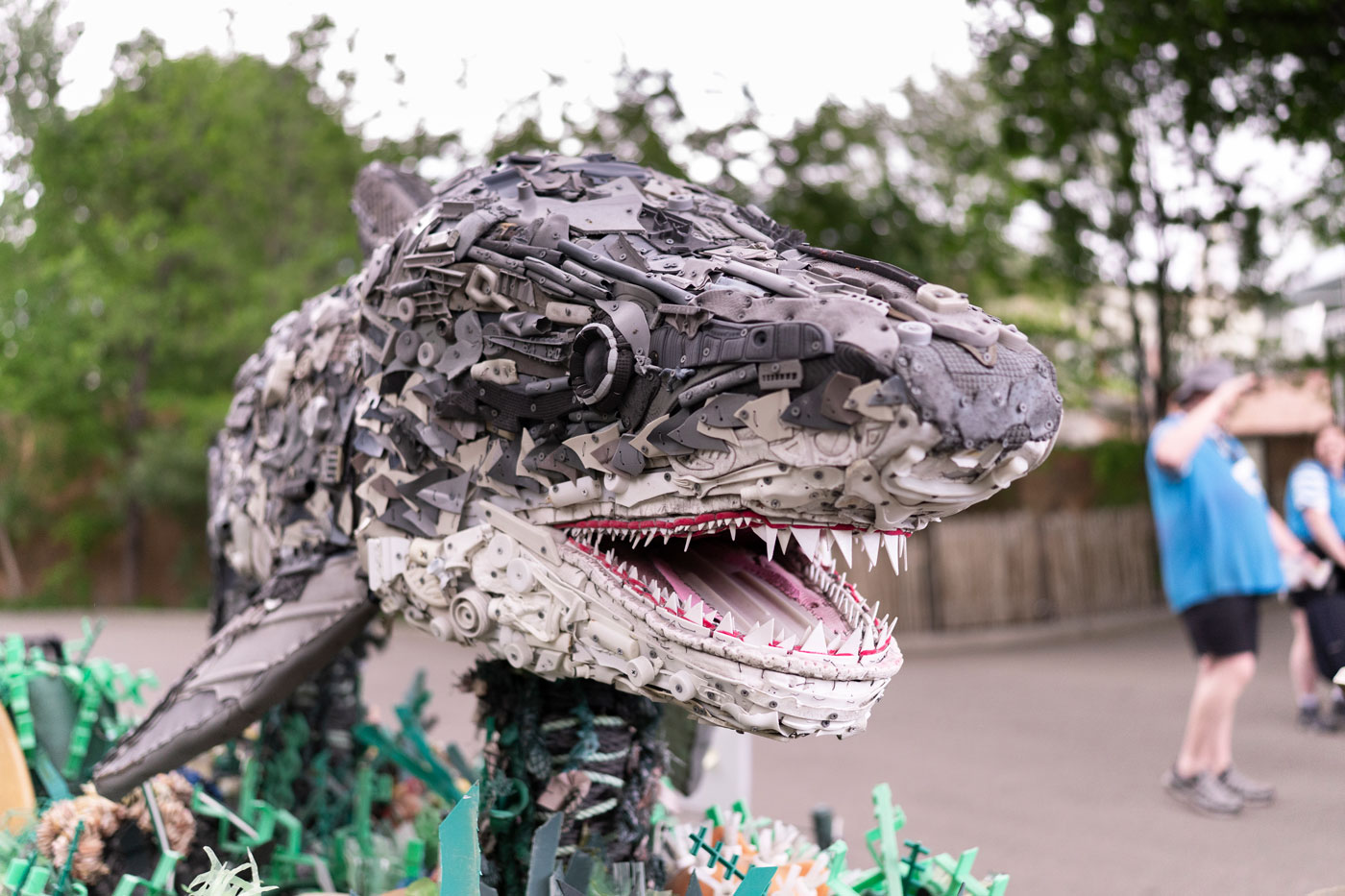This New Wilder Institute/Calgary Zoo Exhibit Turns Marine Pollution Into Art – Avenue Calgary

Washed Ashore Exhibition at Wilder Institute/Calgary Zoo Promotes Environmental Sustainability
Introduction
This summer, the Wilder Institute/Calgary Zoo is hosting the Washed Ashore exhibition, featuring sculptures of marine animals such as fish, penguins, and polar bears made entirely from marine debris. The exhibition runs until September 14 and aims to raise awareness about plastic pollution and its impact on marine life.
Exhibition Overview
The Washed Ashore exhibition is a collaboration with the Washed Ashore non-profit organization, which has:
- Cleaned over 300 miles of beaches in the Pacific Northwest
- Processed and repurposed more than 60,000 pounds of human-caused marine debris
- Created larger-than-life sculptures of marine life from the collected debris
The exhibit blends art with environmental activism to educate visitors on sustainability and promote better recycling habits.
Alignment with Sustainable Development Goals (SDGs)
The Washed Ashore exhibition directly supports several United Nations Sustainable Development Goals, including:
- SDG 12: Responsible Consumption and Production – By encouraging recycling and reducing waste, the exhibit promotes sustainable consumption patterns.
- SDG 14: Life Below Water – The sculptures highlight the detrimental effects of marine pollution on aquatic ecosystems and advocate for the conservation of oceans and marine resources.
- SDG 13: Climate Action – Raising awareness about pollution contributes to broader environmental protection efforts that mitigate climate change impacts.
Exhibition Features and Visitor Information
- The exhibition includes 15 indoor and outdoor sculptures displayed throughout the Wilder Institute/Calgary Zoo grounds.
- It is accessible during regular zoo operating hours and included with daily admission and memberships.
- Visitors can access an online map of the sculpture locations via the zoo’s website.
Conclusion
Washed Ashore’s sculptures serve as a striking and educational visual reminder of the marine animals affected by pollution. The exhibition not only enhances public understanding of environmental sustainability but also aligns with global efforts to achieve the Sustainable Development Goals.
Location: 210 St. George’s Drive N.E., Calgary
calgaryzoo.com/washed-ashore
1. Sustainable Development Goals (SDGs) Addressed or Connected
- SDG 14: Life Below Water
- The article focuses on marine debris and its impact on marine life, directly relating to the conservation and sustainable use of oceans, seas, and marine resources.
- SDG 12: Responsible Consumption and Production
- The exhibit encourages better recycling habits and raises awareness about plastic pollution, which ties into sustainable consumption and waste management.
- SDG 13: Climate Action
- The sculptures include polar bears, symbolizing the effects of pollution and climate change on vulnerable species and ecosystems.
- SDG 4: Quality Education
- The exhibit serves an educational purpose, teaching environmental sustainability and raising awareness about marine pollution.
2. Specific Targets Under Those SDGs
- SDG 14: Life Below Water
- Target 14.1: By 2025, prevent and significantly reduce marine pollution of all kinds, particularly from land-based activities, including marine debris and nutrient pollution.
- SDG 12: Responsible Consumption and Production
- Target 12.5: By 2030, substantially reduce waste generation through prevention, reduction, recycling, and reuse.
- SDG 13: Climate Action
- Target 13.3: Improve education, awareness-raising, and human and institutional capacity on climate change mitigation, adaptation, impact reduction, and early warning.
- SDG 4: Quality Education
- Target 4.7: By 2030, ensure that all learners acquire the knowledge and skills needed to promote sustainable development, including education for sustainable lifestyles, human rights, gender equality, and promotion of a culture of peace and non-violence.
3. Indicators Mentioned or Implied to Measure Progress
- Indicator for SDG 14.1
- Quantity of marine debris collected and processed (e.g., the article mentions over 60,000 pounds of marine debris cleaned and repurposed).
- Number of miles of beaches cleaned (e.g., over 300 miles of beaches cleaned in the Pacific Northwest).
- Indicator for SDG 12.5
- Amount of waste recycled or repurposed into new products (e.g., marine debris transformed into sculptures).
- Public awareness and behavioral change regarding recycling habits, implied through educational impact of the exhibit.
- Indicator for SDG 13.3 and SDG 4.7
- Number of educational programs or exhibits promoting awareness of environmental sustainability and climate change (e.g., Washed Ashore exhibit as an educational tool).
- Visitor engagement and reach, implied by the exhibit being accessible during regular zoo hours and included with admission.
4. Table of SDGs, Targets, and Indicators
| SDGs | Targets | Indicators |
|---|---|---|
| SDG 14: Life Below Water | Target 14.1: Prevent and significantly reduce marine pollution by 2025. |
|
| SDG 12: Responsible Consumption and Production | Target 12.5: Substantially reduce waste generation by 2030 through recycling and reuse. |
|
| SDG 13: Climate Action | Target 13.3: Improve education and awareness on climate change mitigation and adaptation. |
|
| SDG 4: Quality Education | Target 4.7: Ensure learners acquire knowledge and skills for sustainable development by 2030. |
|
Source: avenuecalgary.com








